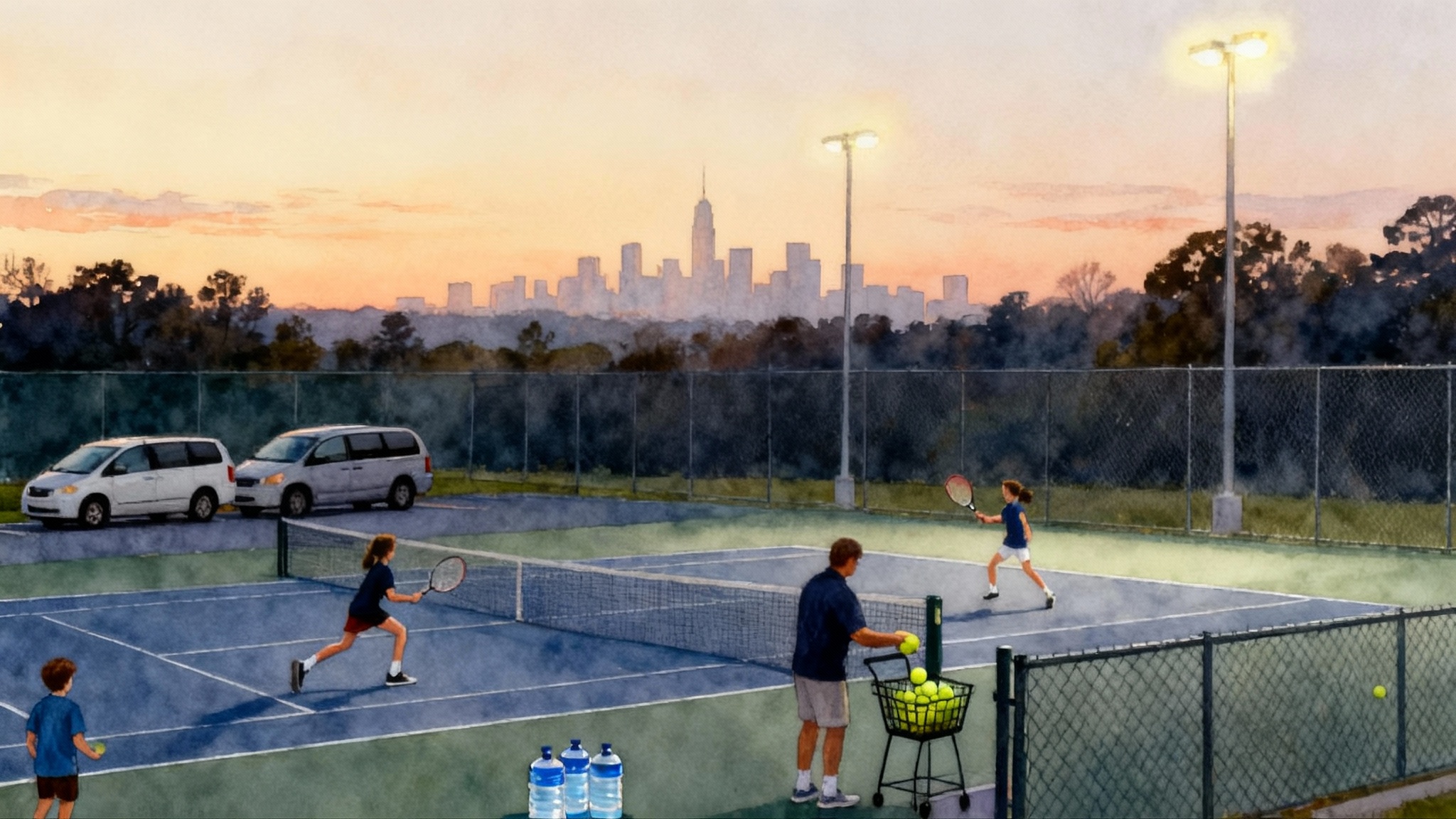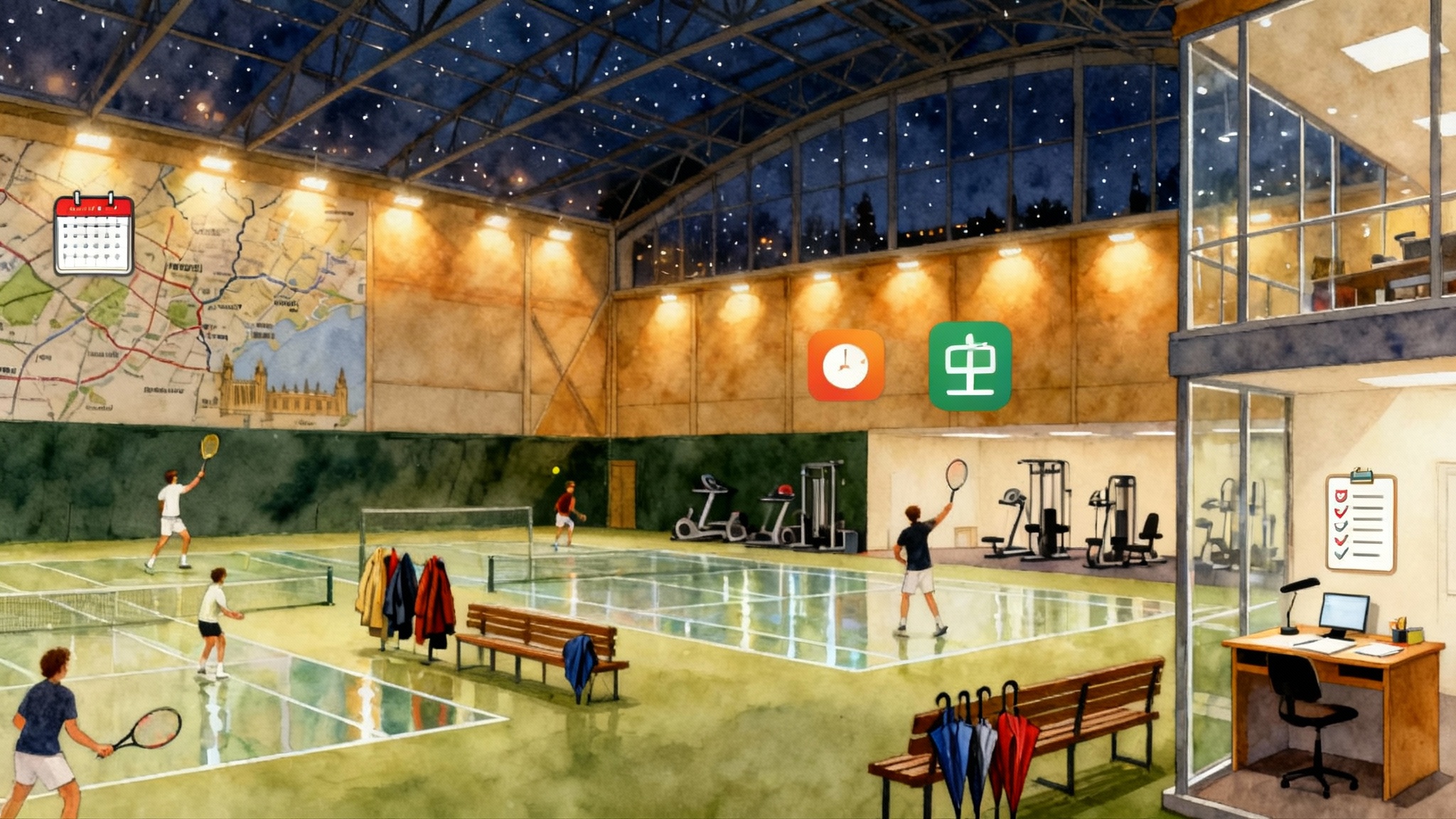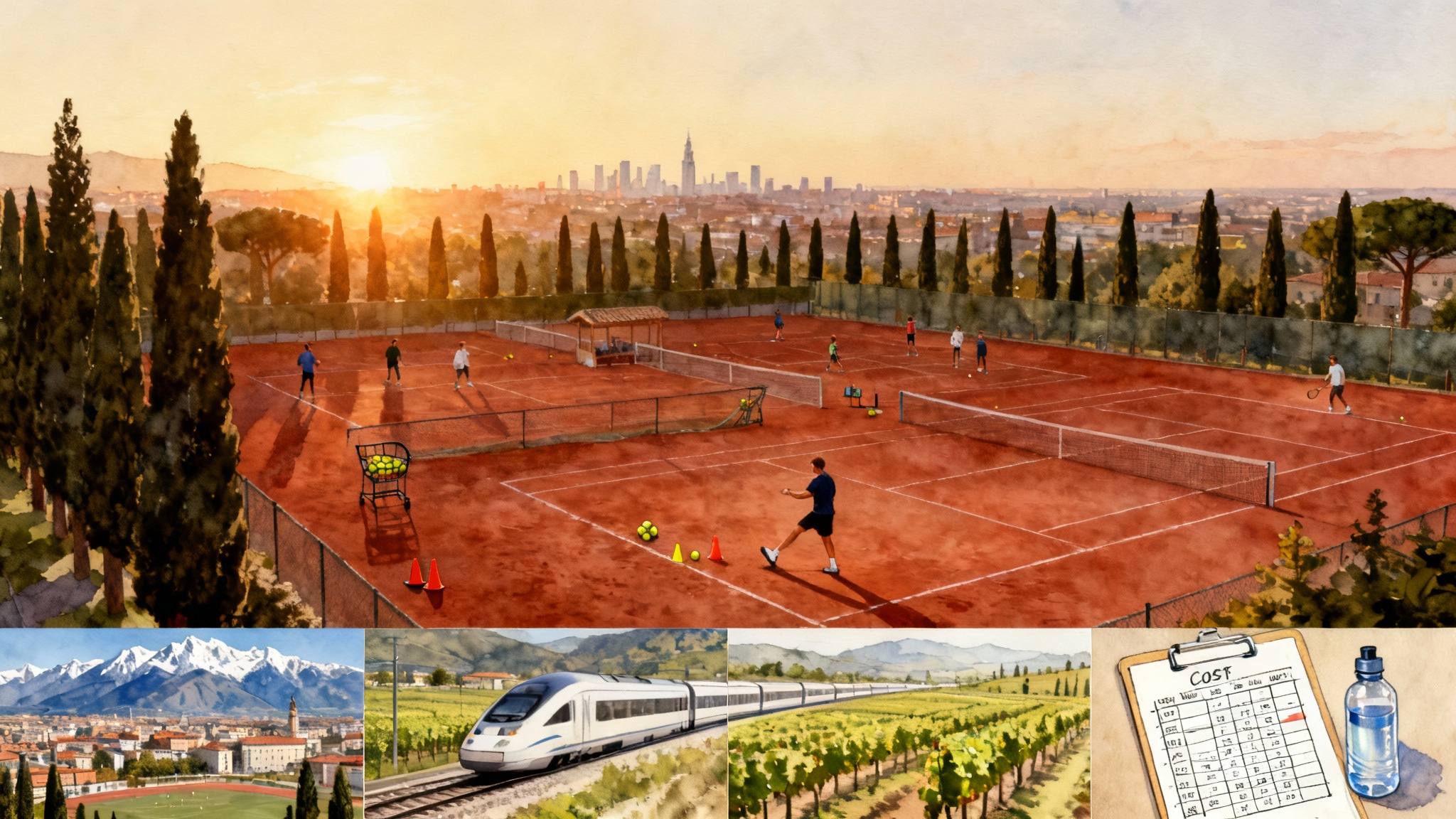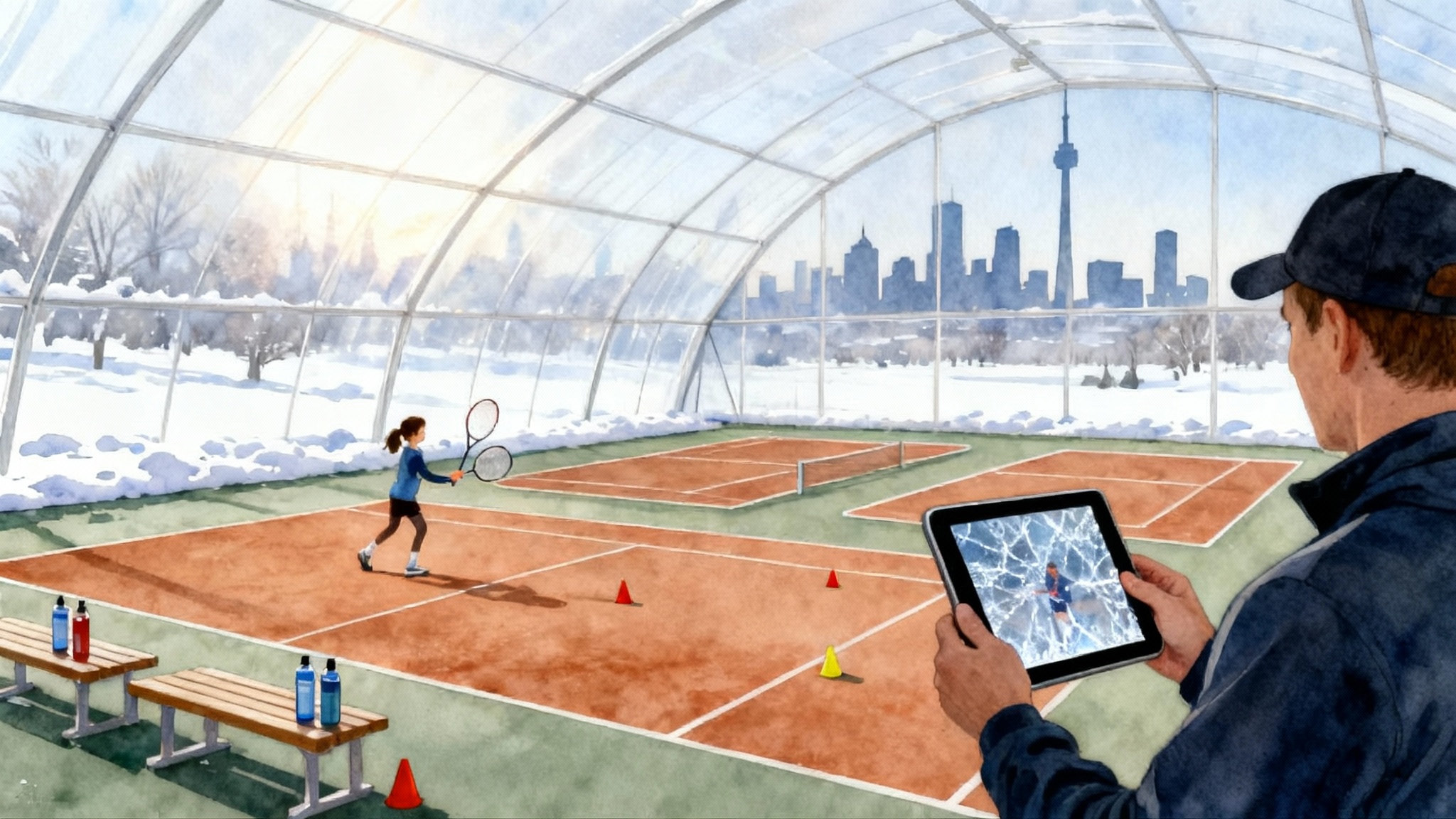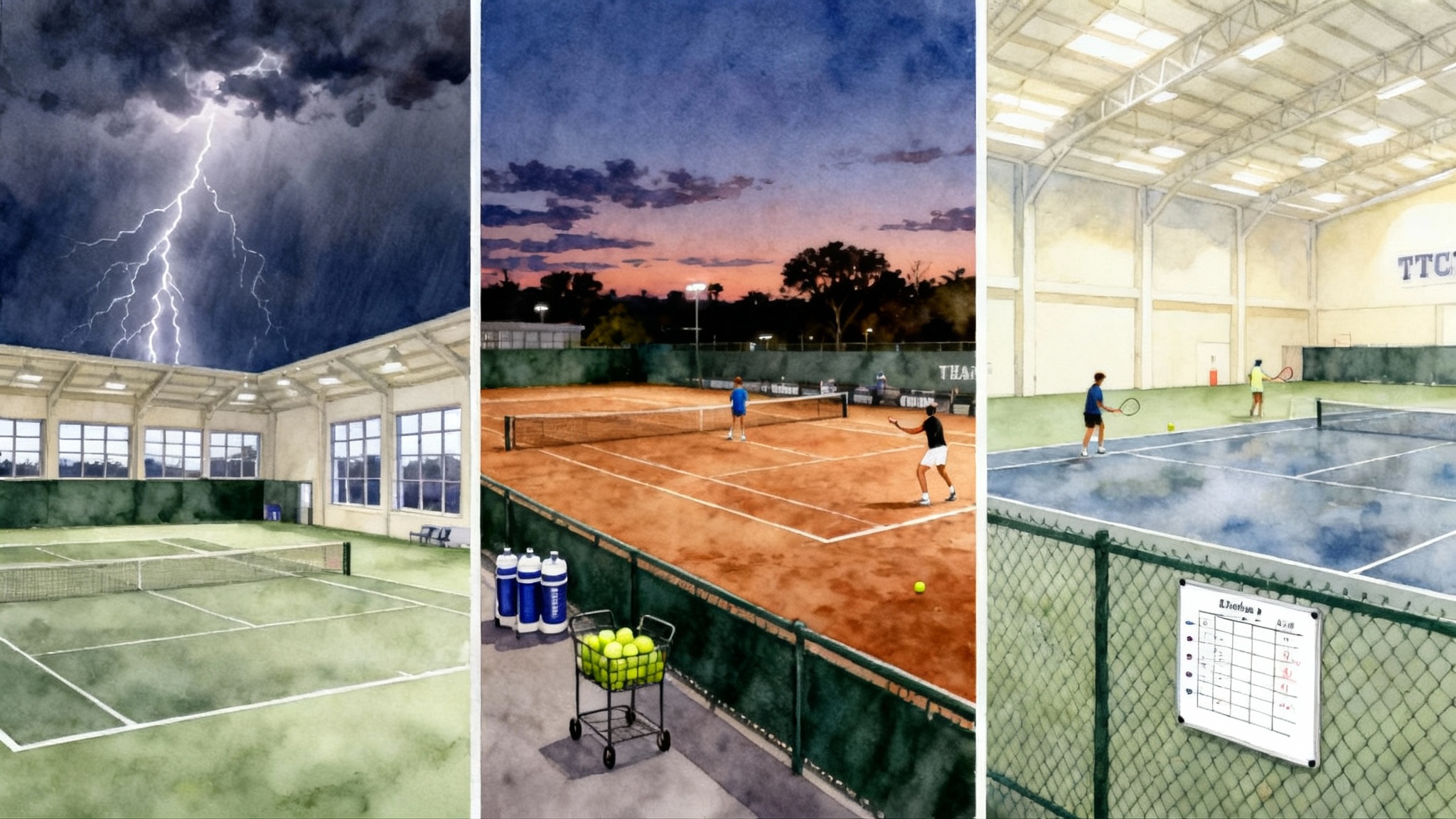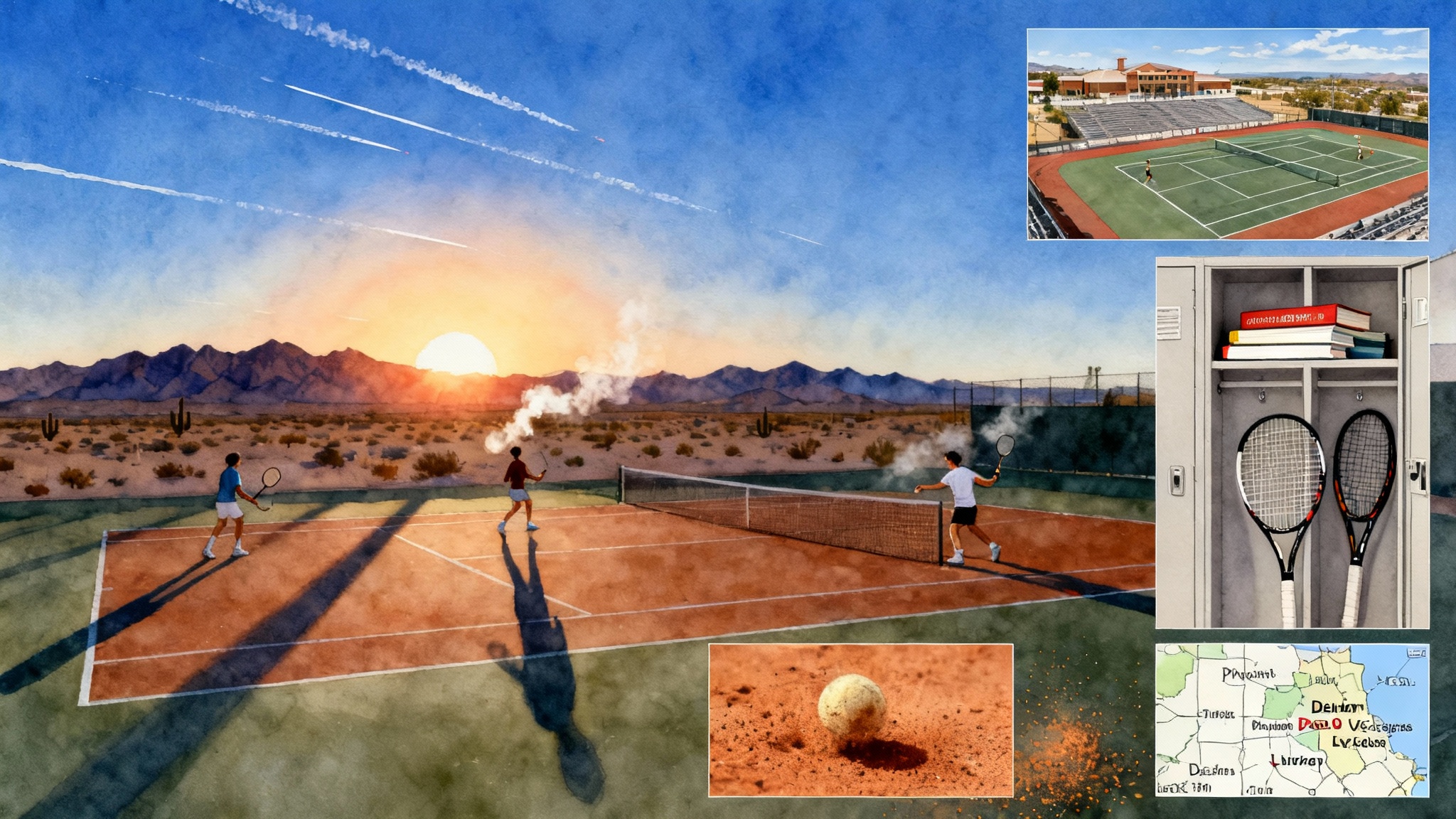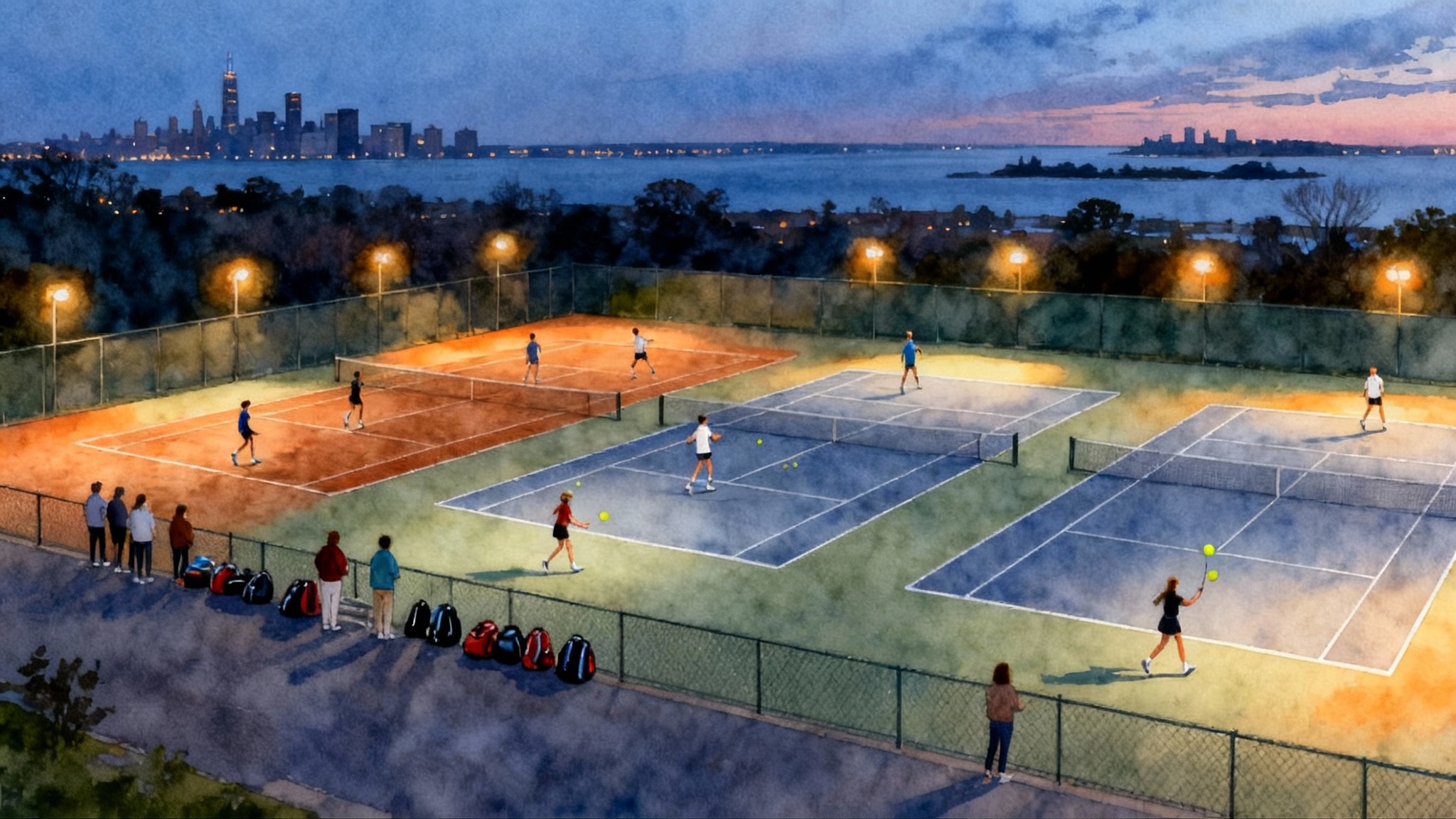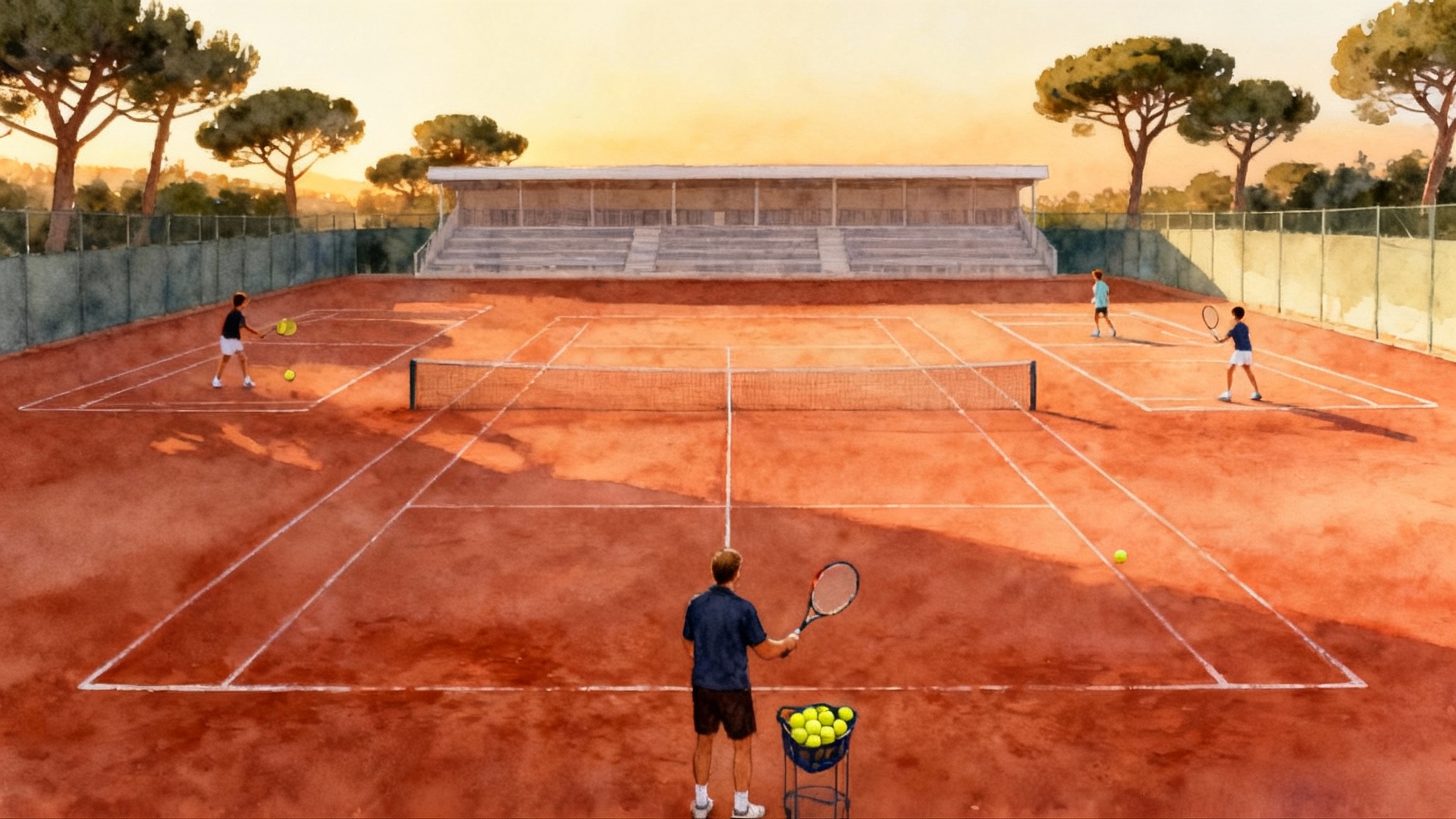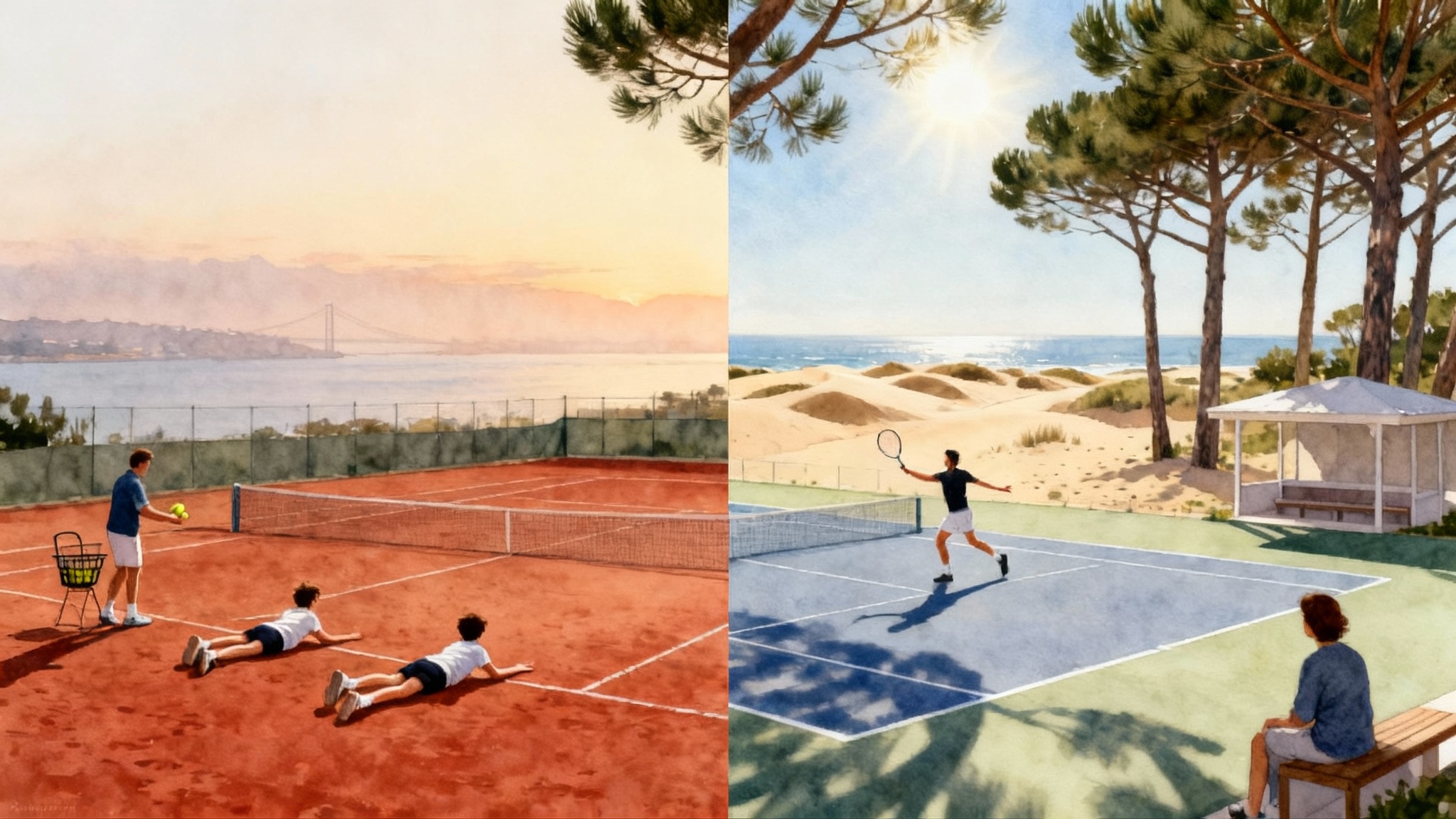Best Florida Tennis Academies 2025–2026: Orlando, Bradenton, Boca
A practical 2025–2026 decision guide to IMG Academy Tennis, Gooding Todero Academy, Magallan Tennis Academy, and ASC Florida. Compare coaching ratios, surfaces, boarding, academics, costs, tournament access, and college outcomes.
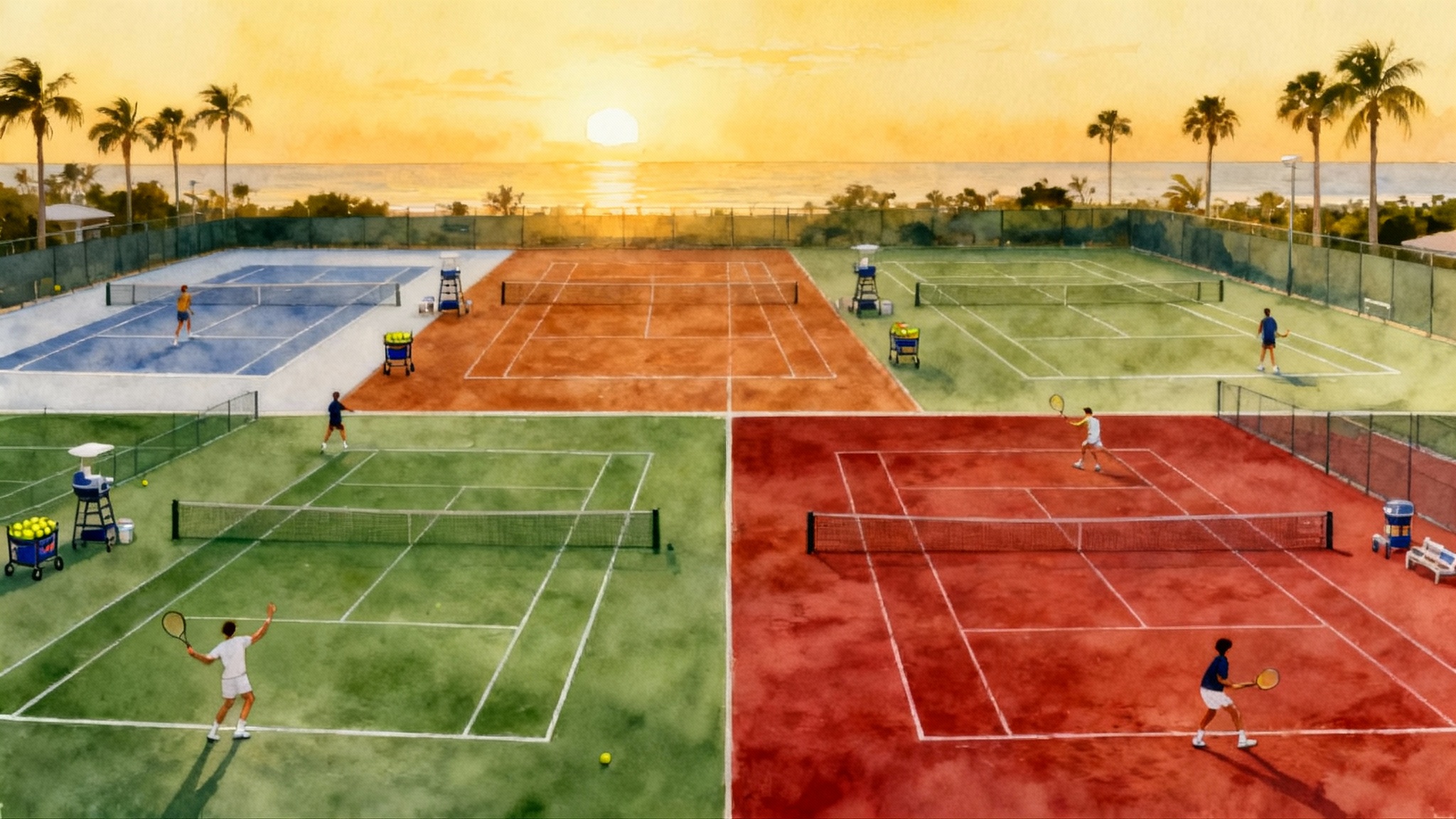
How to use this guide
Families choosing a Florida academy are solving a multi-variable puzzle: training quality, academics, surfaces, cost, travel logistics, and a pathway to competition and college. The aim of this guide is to give you a clear picture of four leading options for 2025 to 2026 in Orlando, Bradenton, Boca Raton, and Naples, then translate differences into practical actions. You will find a side-by-side matrix, plain-English definitions, sample weekly schedules, and travel notes that matter when the plan leaves your spreadsheet and becomes daily life.
Snapshot: four Florida heavyweights for 2025 to 2026
The details below reflect common structures offered by each academy. Schedules, prices, and ratios vary by season, age, and track. Use the ranges as a starting point and confirm specifics during your family’s trial week.
| Academy | Location | Typical coaching ratios | Surface mix | Boarding or day | Integrated academics | Annual cost range (training + base education) | United Tennis Rating and International Tennis Federation access | College placement notes |
|---|---|---|---|---|---|---|---|---|
| IMG Academy Tennis | Bradenton | 4:1 standard groups, smaller pods available at premium | Mostly hard with meaningful clay access | Full boarding and day options | On-campus accredited middle and high school with Advanced Placement courses and college counseling | About 90,000 to 120,000 dollars for boarding school programs; day training tracks lower; weekly camps priced separately | Dense local United Tennis Rating calendar, frequent United States Tennis Association events in Tampa Bay and Sarasota; periodic International Tennis Federation junior events within driving distance | Deep alumni network with consistent Division I and Division II placements; structured college guidance |
| Gooding Todero Academy | Orlando | 2:1 to 4:1 in high-performance blocks | Balanced hard and clay access at large campus settings | Primarily day; boarding via vetted host families or self-arranged rentals | Flexible academics through online and local partner schools; personalized scheduling around training blocks | About 25,000 to 45,000 dollars for full-time training; education and housing priced separately | Exceptional density of United Tennis Rating and United States Tennis Association events at and around the national campus; frequent high-level draws | Newer brand with experienced coaches; college placements growing; relies on individualized placement support |
| Magallan Tennis Academy | Boca Raton | 2:1 to 3:1 boutique small-group model | Heavy green clay with hard court access | Day program; boarding via host families by arrangement | Online school integrations are common; select local private school partners | About 18,000 to 35,000 dollars for full-time training; housing and schooling extra | Very dense South Florida calendar with weekly United Tennis Rating events and regular United States Tennis Association tournaments from West Palm Beach to Miami | Smaller cohorts yield personalized placement approach; families often engage independent college advisors |
| ASC Florida (Academia Sánchez-Casal) | Naples | 3:1 to 4:1 with Spanish footwork emphasis | Clay-forward with hard court integration | Full boarding and day options | Structured academics via partner school pathways; balanced study and court blocks | About 40,000 to 65,000 dollars for training and academics; boarding extra depending on room type | Consistent United Tennis Rating and United States Tennis Association access on the Gulf Coast; occasional drives to East Coast for stronger fields | Long-standing global network with regular Division I, Division II, and international university placements |
Notes on terms:
- United Tennis Rating is a global match rating system used by many Florida events.
- International Tennis Federation junior events are ranked tournaments that award world junior points. See the ITF World Tennis Tour Juniors.
- United States Tennis Association is the national governing body that sanctions a large share of junior tournaments. Search the USTA junior tournaments calendar for upcoming events.
What the numbers actually mean for your player
- Coaching ratio: Lower numbers can mean more ball contacts per minute and more feedback. A true 2:1 block feels like a private lesson with a sparring partner. A solid 4:1 group can be better for point-play realism and competitive stress. The best question to ask is not only the ratio but how it changes by block type: technical, fitness, and live-ball.
- Surface mix: Clay favors repetition, movement patterns, and decision-making under longer rallies. Hard courts help timing, first-strike patterns, and serve-plus-one. A year with 50 to 70 percent clay often produces footwork gains without blunting hard-court aggression.
- Boarding and academics: True integration matters. If classes sit inside the daily training rhythm, you minimize commute time and protect recovery. If the academy is day-only, ask who actually coordinates test windows, exam proctoring, and missed assignment plans.
- Cost range: Pricing swings with ratio, boarding, travel, and extras like strength testing and physio. Compare apples to apples by building a 12-month total cost of ownership: tuition, housing, food, flights, car, insurance, tournament fees, and entry fees.
- Tournament access: A dense calendar cuts travel costs and lets players stack matches. Look beyond counts and study draw strength and surface split so match play mirrors your training.
- College placement: Ask for three years of placement lists that include contactable alumni and the role the academy played. Distinguish between players who arrived already at a recruitable level and those who made the jump during the program.
Academy profiles
IMG Academy Tennis, Bradenton
For families who want a fully contained ecosystem, IMG is the template. The on-campus school, dorms, dining, medical, strength, and leadership support compress the logistics burden into a single address. Training days often mix group drilling at 4:1, situation games at 4:1 to 6:1, plus optional small-pod technical sessions. Clay is available for periodized blocks, while the overall feel is hard-court speed. For more background, review the IMG Academy Tennis profile.
What stands out: structure. Schedules run like a bell schedule. College guidance is formalized with transcript management, counselor meetings, and mock calls. The tradeoff is scale. Families should watch a full day to see how your player is seen inside a large, moving system. If you prefer predictable routines and want everything on one campus, IMG fits that brief.
Best for: students who thrive in structured environments, need integrated academics, and want a large peer pool for daily match play.
Gooding Todero Academy, Orlando
Operating in the orbit of the national campus, Gooding Todero Academy offers high-touch blocks in a setting that gives you both surfaces and a deep tournament calendar. Coaching ratios in the core groups trend tighter, especially in technical and serve sessions. The day-school model puts families in charge of housing and schooling, which can be a budget advantage if you already planned online education or have local options. Learn more in the Gooding Todero Academy overview.
What stands out: efficiency. The practice windows are purposeful, and access to frequent United Tennis Rating and United States Tennis Association events means you can play quality matches without burning weekends on long drives. The tradeoff is that you assemble the rest of the ecosystem. Make sure someone owns the academic calendar, test windows, and time-management guardrails.
Best for: players who already have a schooling plan and want match density with a coach-driven, small-group environment.
Magallan Tennis Academy, Boca Raton
Boca Raton sits in one of the richest junior tennis corridors in the country. Magallan positions itself as boutique: small pods, heavy clay volume to groove footwork, and a staff that builds individual patterns rather than templated play. Day-only attendance keeps costs contained, and families commonly pair the program with online schooling or nearby private schools. See the Magallan Tennis Academy snapshot.
What stands out: personalization. With 2:1 to 3:1 ratios in key blocks, feedback cycles are fast and the coaches can track daily themes. Tournament choice is a feature, not an afterthought. South Florida offers meaningful draws each week, so you can target specific surfaces and levels.
Best for: families who value individualized attention and can self-manage academics and housing in a flexible, tournament-dense market.
ASC Florida, Naples
Sánchez-Casal brought the Spanish training DNA to Florida early, and the Naples campus keeps that clay-first, footwork-heavy identity. Expect a clear progression from basket to live-ball to point construction, with recurring themes like neutral-to-offensive transitions and balance out of the split step. The campus offers boarding and a consistent study-train rhythm through partner academics.
What stands out: methodology. If you want deliberate footwork training and decision patterns that hold up on clay, you will see it here. The Gulf Coast tournament calendar is consistent, and families often drive to the East Coast for select stronger draws as needed.
Best for: athletes who respond to methodical development and want the boarding plus academic integration without the scale of the largest campus.
Sample weekly schedules you can expect
These examples show the rhythm that families commonly experience. Times are representative. Your player’s track will adjust for age, load management, and competition weeks.
IMG Academy week at a glance
- Monday to Friday
- 7:15 Breakfast and prep
- 8:00 Academic block one
- 10:15 On-court technical block, 4:1, theme work on serve plus first ball
- 12:00 Lunch and recovery
- 1:15 Strength and movement session, lower-body emphasis
- 2:15 On-court live-ball games, 4:1 to 6:1, situational points
- 4:15 Optional small-pod technical tune-up or supervised study hall
- 6:00 Dinner
- 7:00 Study hours, lights-out target by 10:00
- Saturday
- Team match play or United Tennis Rating entry within 45 minutes; travel arranged through dorm staff for boarders
- Sunday
- Recovery, mobility, optional video review with coach
Gooding Todero Academy week at a glance
- Monday to Friday
- 7:30 Independent academics or online classes
- 9:00 On-court technical block, 2:1 to 3:1, video checkpoints
- 10:45 Live-ball patterns on clay, return plus depth building
- 12:15 Lunch
- 1:15 Strength session and injury-prevention circuit
- 2:15 Point-play ladder, hard courts, serve games and plus-one
- 4:00 Academics or tutoring window
- Saturday
- United Tennis Rating or United States Tennis Association tournament play at the national campus or nearby clubs
- Sunday
- Light hit, scouting, or rest
Magallan Tennis Academy week at a glance
- Monday to Friday
- 8:00 Online school block one
- 10:00 Clay-court footwork ladders and basket work, 2:1
- 11:15 Live-ball neutral to offense games, patterns by player type
- 12:30 Lunch
- 1:30 Strength and mobility with prehab focus
- 2:30 Match-play sets or situational tiebreakers
- 4:15 Optional serve studios or returns on hard
- Saturday
- Targeted tournament play in Boca, Delray Beach, or Miami
- Sunday
- Recovery and family planning for next week
ASC Florida week at a glance
- Monday to Friday
- 7:45 Study block or language lab depending on schedule
- 9:00 Clay technical themes, 3:1 to 4:1, heavy on spacing and balance
- 10:45 Fitness with emphasis on deceleration and core stability
- 12:00 Lunch
- 1:15 Tactical progressions and patterns, live-ball
- 3:00 Supervised match play and video notes
- 5:00 Study hall in boarding residence or partner school campus
- Saturday
- United Tennis Rating or United States Tennis Association events in Naples, Fort Myers, or Estero
- Sunday
- Recovery and optional beach jogs with mobility
Florida travel and logistics that actually matter
- Airports and drive times: Orlando International Airport to Lake Nona is about 15 to 25 minutes. Sarasota Bradenton International Airport to IMG is about 20 to 30 minutes. Palm Beach International Airport to Boca Raton is about 25 to 40 minutes; Fort Lauderdale and Miami increase access but add freeway time. Southwest Florida International Airport to Naples is about 30 to 45 minutes depending on traffic.
- Car strategy: You will drive. Plan for a compact car with room for a 28-inch bag, stringing supplies, and a small cooler. Consider a transponder for tolls to save time.
- Housing: For day-only programs, furnished apartments or extended-stay hotels near the courts keep routines simple. Boarding families should clarify curfews, supervision, medical protocols, and transport to tournaments not hosted on campus.
- Weather: June through September brings high heat and predictable afternoon storms. Hydration starts the night before. Pack two pairs of shoes to rotate between rain and sun. Hurricane season runs from June 1 to November 30, so build a backup training plan for weather closures.
- School calendar: Private and online schools can flex, but standardized tests, college visits, and key tournaments collide in spring. Put these on one shared family calendar with the coach’s input by August.
- Medical and recovery: Identify a local sports physical therapist before you need one. Pre-book a baseline screening during your first week. Travel with your own bands, lacrosse ball, and a compact massage gun.
- Tournaments: Audit the next ten weeks of local United Tennis Rating and United States Tennis Association events. Target a mix of level-building draws and one stretch event every three weeks. For International Tennis Federation juniors, plan several weeks ahead for acceptance lists and travel.
How to compare with clarity
Use these steps to turn the matrix into a choice.
-
Define the non-negotiables. Examples: integrated academics on campus, boarding with supervised study hall, or a minimum of 60 percent clay. If a program cannot deliver those, remove it early to save time.
-
Build a total cost of ownership. Line items: training tuition, academics, housing or dorm fees, meals, transport, tournament entries, coaching at events, physio, and stringing. Multiply monthly costs by twelve and add a 10 percent buffer.
-
Test coaching fit with a trial week. Watch how feedback is delivered, not just what is said. Look for clarity, consistent language, and specificity. A good test is how a coach handles a bad training day. You want calm, precise corrections.
-
Inspect the match pipeline. Ask for a sample eight-week competition map that aligns with your training themes. If your child is drilling heavy clay patterns, do not play four hard-court tournaments in a row.
-
Validate college support. Request a three-year placement list with coach contacts. Ask who writes recommendation letters, how video is produced, and how calls with coaches are prepped. A structured process beats general optimism.
-
Lock in academics early. If you choose a day academy, assign one adult to own academics and liaise with teachers. If you choose an integrated model, meet the school counselor during your trial week and verify graduation requirements.
Picking the right environment by player type
- The builder: Needs reps, clear progression, and patient coaching. Clay-forward programs such as ASC Florida or a clay-heavy track at Magallan can accelerate foundation work.
- The competitor: Thrives on frequent matches. Orlando and Boca Raton shine due to weekly United Tennis Rating and United States Tennis Association access, with Gooding Todero Academy and Magallan well positioned.
- The structured scholar: Needs everything under one roof to protect recovery and study time. IMG’s full ecosystem is a logical fit.
- The boutique learner: Responds to small pods and direct feedback. Gooding Todero Academy and Magallan lean into tighter ratios.
Red flags to notice during visits
- Vague ratios that change on the fly. If you are promised 3:1 and see consistent 6:1, ask why and for how long.
- No written plan that links training themes to the next three tournaments.
- One coach covering too many courts. Watch for divided attention during complex drills.
- Academics treated as an afterthought. Missing proctoring plans and unmanaged test windows create stress that shows up on court.
Your 48-hour campus visit plan
- Day 1 morning: meet director, observe technical block, confirm ratio and theme. Afternoon: watch match-play and ask how themes showed up.
- Day 1 late afternoon: speak with strength coach about periodization for your event calendar.
- Day 2 morning: meet academic coordinator or counselor to map classes and travel weeks.
- Day 2 afternoon: review college placement process with specific examples from the past three years.
Bottom line
All four academies can develop motivated players. The real question is which environment matches your child’s learning style and your family’s logistics and budget. IMG delivers a one-address solution where school and sport are tightly integrated. Gooding Todero Academy trims group sizes and leverages Orlando’s match density. Magallan offers boutique attention in a tournament-rich corridor. ASC Florida brings deliberate Spanish methodology and a boarding option without the scale of the biggest campus.
Choose deliberately. Map your non-negotiables, test the daily rhythm, and commit to a competition plan that mirrors training. The right fit is the one where your player goes to bed tired, curious, and excited to do it again tomorrow.
